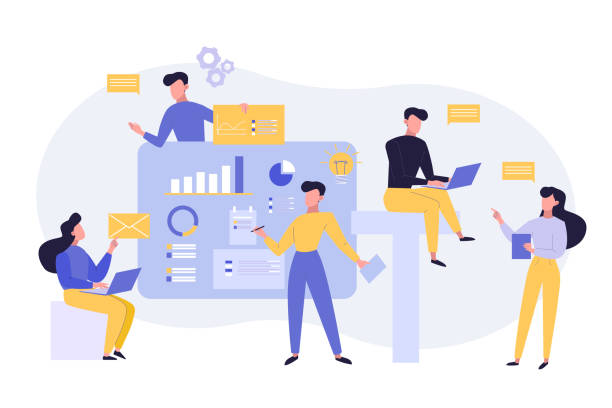Introduction to SEO-Optimized Website Design: Why is it Important?
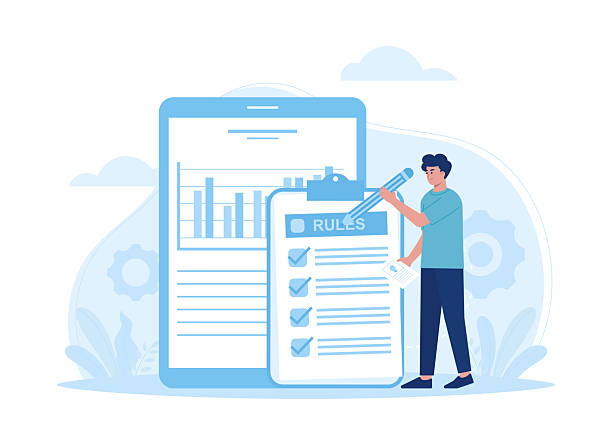
#SEO_Optimized_Website_Design is no longer a luxury choice, but a necessity for any business that wants to be seen in the digital world.
In fact, designing a website that aligns with SEO (Search Engine Optimization) principles from the ground up forms the core foundation of your online success.
This approach goes beyond mere aesthetic appeal; it addresses the technical architecture, content structure, and user experience to ensure search engines like Google can easily #crawl, #index, and ultimately display it to users.
The ultimate goal of website SEO is to increase #organic_visibility and attract targeted traffic.
When a site is designed according to search engine optimization standards, it has a higher chance of ranking higher in search results.
This not only means increased visitors but also attracting an audience actively looking for your products or services.
An SEO-optimized website design must adhere to search engine standards in terms of technical aspects, content structure, loading speed, and responsiveness across various devices.
This process includes choosing the right keywords, optimizing title tags and meta descriptions, using appropriate URL structures, and creating high-quality, relevant content.
Additionally, technical aspects such as XML sitemaps, robots.txt files, and structured data (schema markup) play a crucial role in this design.
Neglecting these details at the outset can lead to significant costs in the future to fix SEO issues.
Therefore, for any modern business, investing in SEO-optimized website design from the very beginning is a strategic and intelligent decision that will yield long-term returns.
This type of design helps you stand out among competitors and establish a strong, sustainable online presence.
This is the first step towards your digital success.
Are you frustrated with your online store’s low conversion rate?
Rasawob is your definitive solution with professional e-commerce website design!
✅ Increase your sales and revenue
✅ Unparalleled user experience for your customers
⚡ Get a free consultation now!
Key Principles of SEO-Oriented Website Design

#Key_Principles of SEO-oriented website design include a set of techniques and strategies aimed at optimizing the site for search engines and users simultaneously.
One of the most important principles is precise and targeted #keyword_research, which forms the foundation for producing useful and relevant content.
These keywords should then be naturally and logically incorporated into titles, texts, meta descriptions, and image alt tags.
#Website_structure is also very important; a logical and clear hierarchy for pages helps search engines better understand your site’s content, and users can navigate the site more easily.
Using strong and relevant #internal_linking not only helps improve the user experience but also distributes SEO authority and value among the site’s pages.
The technical aspects of SEO-optimized website design are also crucial.
Page Speed is one of Google’s important ranking factors and significantly impacts user experience.
Image optimization, code compression (CSS, JavaScript, HTML), and using appropriate hosting all contribute to improving site speed.
Core Web Vitals, Google’s new metrics for evaluating user experience, include LCP (Largest Contentful Paint), FID (First Input Delay), and CLS (Cumulative Layout Shift), which must be considered in design.
Additionally, the site must be fully responsive and mobile-friendly, as a significant portion of searches today occur via mobile devices.
Site security (using HTTPS) is also an important ranking factor and increases user trust.
Finally, SEO-optimized website design requires continuous updates to content and SEO techniques, as search engine algorithms are constantly changing, and online competition is very high.
Keyword Research: The Essence of SEO-Optimized Website Design
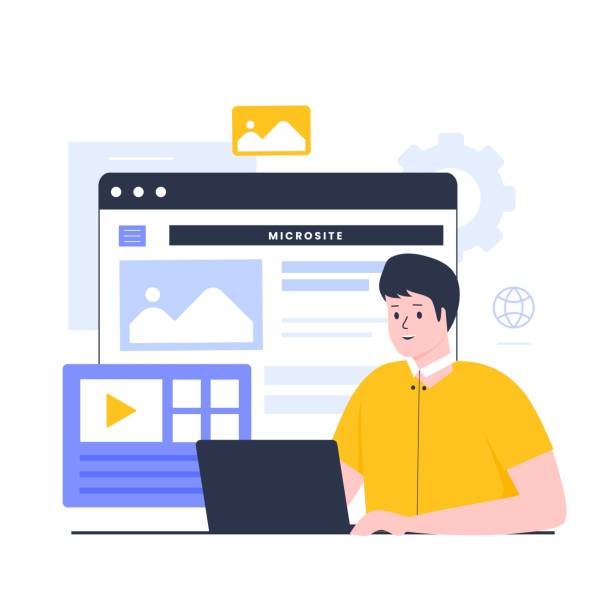
#Keyword_research can be considered the essence and heart of any successful SEO-optimized website design.
Without a precise understanding of what phrases your audience enters into search engines, any effort to optimize the site might be fruitless.
This process involves identifying the words and phrases users employ to find products, services, or information related to your business.
The #goal of keyword research is to find a balance between high search volume and low competition for keywords.
Keywords can be divided into two main categories: #short_tail_keywords, which are generally one or two words and have higher search volumes but also fiercer competition, and #long_tail_keywords, which are longer and more specific phrases, have lower search volumes but better indicate user intent and typically have less competition.
Various tools such as Google Keyword Planner, Ahrefs, Semrush, and Moz Keyword Explorer help you discover relevant keywords, estimate their search volume, and assess the difficulty of ranking for them.
After identifying primary and secondary keywords, they should be naturally and strategically incorporated into webpage content, titles, meta descriptions, URLs, and even image names and their alt tags.
A crucial point in SEO-optimized website design is that each page should be optimized for one primary keyword and several secondary keywords.
This helps search engines better understand the main topic of each page and link it to relevant user searches.
Keyword research is not a one-time process and should be repeated periodically.
User behavior and search trends are constantly changing, and to maintain ranking in search results, the keyword strategy also needs to be updated.
This approach not only helps improve Google rankings but also ensures that the content produced genuinely addresses the needs and questions of your target users.
This is a specialized aspect of SEO-optimized website design that directly impacts organic traffic and conversion rates.
To better understand the key differences, review the table below:
| Feature | Short-tail Keywords | Long-tail Keywords |
|---|---|---|
| Number of Words | 1-2 words | 3+ words (often in the form of questions) |
| Search Volume | High | Low |
| Competition | Very High | Relatively Low |
| Conversion Rate | Lower (user intent less clear) | Higher (user intent clearer) |
| Example | “website design” | “best SEO-optimized website design company in Tehran” |
On-Page SEO Optimization in Web Design
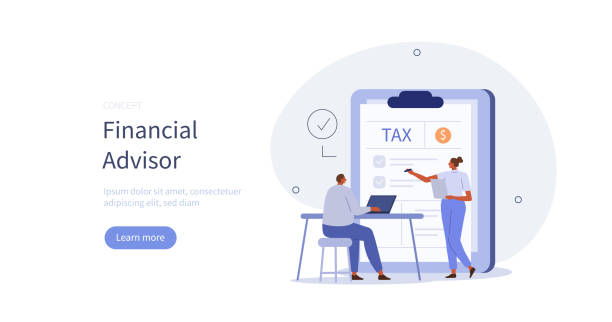
#On_Page_SEO refers to a set of actions performed directly on your website pages to improve their ranking in search engines and attract more organic traffic.
This vital part of SEO-optimized website design involves various elements that must be applied with precision and a clear strategy.
One of the most important of these elements is the Title Tag.
The title tag is not only the first thing a user sees in search results, but it also tells search engines what the main content of the page is about.
It should include the page’s main keyword and be written in an attractive and persuasive way.
Another element is the Meta Description.
While not a direct ranking factor, it plays a crucial role in increasing the Click-Through Rate (CTR).
These descriptions should be an attractive summary of the page’s content and encourage users to click.
Using keywords in meta descriptions, though it doesn’t affect ranking, can highlight the words searched by the user.
The structure of headings (H1, H2, H3, etc.) is also very important in an SEO-optimized website design.
H1 should contain the main keyword and act like the article’s main title, while H2 and H3 are used to divide content into smaller, more readable sections and can include secondary keywords.
Image optimization is also an essential component.
Using Alt Text for images not only helps individuals with visual impairments but also assists search engines in understanding the image content.
Alt Text should be descriptive and include relevant keywords.
Furthermore, optimizing image size to improve site loading speed is very important.
Internal Linking is also a crucial principle of on-page SEO; by linking related pages to each other, you help users find more content and distribute SEO authority throughout the site.
Ultimately, content quality and depth are the most important factors in On-Page SEO.
Your content must be comprehensive, valuable, unique, and answer users’ questions.
These aspects together make a website more appealing and understandable for search engines and users, which in turn leads to improved rankings and increased traffic.
Does your current corporate website not reflect your brand’s credibility and strength as it should? Rasawob solves this challenge for you with professional corporate website design.
✅ Increase visitor credibility and trust
✅ Attract more targeted customers
⚡ Click to get a free consultation!
Off-Page SEO and Its Connection to Website Design
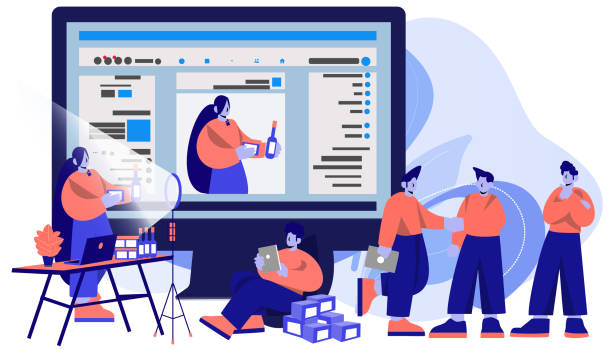
#Off_Page_SEO encompasses all activities performed outside of your website that influence its ranking in search engines.
While SEO-optimized website design primarily focuses on internal aspects of the website, Off-Page SEO acts as its vital complement.
The main and most crucial factor in Off-Page SEO is #Link_Building.
When other websites (especially reputable and relevant ones) link to your site, this is considered a vote of confidence from them to search engines and increases your site’s Domain Authority.
The greater the number and quality of backlinks, the higher your website’s chances of ranking in search results.
There are various methods for link building, including: #creating_high_quality_content_that_naturally_attracts_links (Link Bait), guest posting on other blogs, participating in specialized forums, and collaborating with influencers.
However, more important than the quantity of backlinks is their quality.
A backlink from a highly authoritative and relevant site is worth much more than dozens of backlinks from low-quality and irrelevant sites.
In recent years, Google has heavily focused on the quality of backlinks and penalizes spammy or artificial links.
In addition to link building, social media activity also indirectly affects SEO.
Sharing your site’s content on platforms like Instagram, LinkedIn, and Twitter can lead to increased visibility and referral traffic.
Although social signals are not direct ranking factors, they can contribute to increased brand awareness and, consequently, more branded searches and organic traffic.
Brand Mentions, even if they don’t include links, can also signal to search engines that your brand is reputable and well-known.
Ultimately, SEO-optimized website design is only half of the equation; to achieve complete success, you must continuously work on Off-Page SEO strategies to increase your site’s authority and popularity in the online space and attract sustainable traffic to it.
User Experience (UX) and Its Role in SEO and Website Design
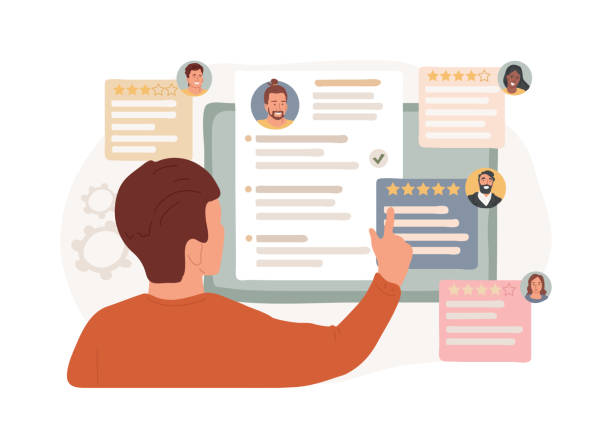
#User_Experience (UX) is no longer a separate concept from SEO; rather, it is the #beating_heart of any modern SEO-optimized website design.
Search engines, especially Google, are increasingly emphasizing user experience metrics for ranking websites.
A site with a poor user experience, even if it has good technical SEO, may face ranking difficulties.
This is because Google aims to provide the best and most relevant results to its users, and a site with good UX means a site that users enjoy interacting with and whose needs are met.
Factors such as Page Speed, responsiveness (mobile compatibility), easy and intuitive navigation design, content readability, and reduced Bounce Rate are all important UX components that directly impact SEO.
If users quickly leave a site (high bounce rate), this is a negative signal for search engines, indicating that your site is not sufficiently relevant or user-friendly.
Conversely, if users spend a lot of time on your site, view multiple pages, and engage with your content, this is a positive signal that your site is useful and valuable.
This is where the question arises: Do users truly enjoy your site?
For SEO-optimized website design with excellent UX, the following points should be considered: a logical and understandable information structure, attractive visual design without sacrificing functionality, simple and smooth contact forms and purchase processes, and high-quality content that is easily scannable and readable (using short paragraphs, bullet points, and subheadings).
Additionally, using appropriate white space and clear Call-to-Action buttons helps improve UX.
The ultimate goal is for users to easily access the information they need and have a positive experience on your site.
This #analytical and #guidance-oriented approach to continuous website improvement not only leads to increased user satisfaction but also naturally improves your SEO ranking, as search engines aim to reward websites that provide the best user experience.
Responsiveness and Core Web Vitals: Cornerstones of SEO-Optimized Website Design

#Responsiveness and #Core_Web_Vitals are two inseparable concepts in modern #SEO_optimized_website_design that directly impact #SEO_ranking and user experience.
In today’s world, where a significant portion of searches is conducted via mobile, having a fully #responsive website is not just an advantage, but a necessity.
A responsive site means a site that displays well across different sizes and devices (mobile, tablet, desktop) without losing functionality or appropriate appearance.
Since 2015, Google introduced its “Mobile-First Indexing” algorithm, meaning that to rank websites, it primarily checks their mobile version first.
Therefore, if your site is not optimized for mobile, it may lose its rankings in search results.
Core Web Vitals are also a set of real-world, user-centric metrics that Google has adopted as ranking factors.
These metrics include three main indicators:
- LCP (Largest Contentful Paint): The time it takes for the largest content element on the page (image or text block) to become visible.
An ideal LCP should be less than 2.5 seconds. - FID (First Input Delay): The time it takes for the browser to respond to the user’s first interaction (such as clicking a button).
An ideal FID should be less than 100 milliseconds. - CLS (Cumulative Layout Shift): Measures the visual stability of the page.
This metric checks the extent of unexpected layout shifts on the page.
An ideal CLS should be less than 0.1.
An SEO-optimized website design that adheres to these metrics not only provides a better user experience but also has a higher chance of ranking on Google.
Improving these metrics requires optimizing website code, compressing images, using caching, and optimizing the server.
These actions are specialized and technical aspects of site design and development that directly impact your site’s performance in search results.
These metrics are continuously monitored by Google, and their reports are visible in Google Search Console.
Awareness and timely action to improve these metrics are of critical importance.
| Metric | Description | Importance for SEO |
|---|---|---|
| LCP | Time to load the largest content | Indicates initial page load speed and user satisfaction |
| FID | Time to respond to the first user interaction | Indicates page interactivity and responsiveness |
| CLS | Visual stability of page layout | Indicates visual stability and prevention of unpleasant user experience |
Content Strategy for SEO-Optimized and User-Friendly Website Design

#Content_Strategy is the backbone of any successful SEO-optimized website design.
Content is king, but not just any content; it must be content that provides #added_value, answers #user_questions, and is #unique.
A strong content strategy not only helps attract organic traffic but also keeps users on your site and converts them into customers.
This educational and entertaining approach can maximize user engagement.
To begin, keyword research, which we discussed earlier, plays a vital role.
Your content must be written based on the words your target audience is searching for.
Types of content can include: #comprehensive_blog_articles, #educational_guides, #infographics, #videos, #Frequently_Asked_Questions (FAQ), and even #customer_reviews.
Variety in content format can help attract a wider range of users with different preferences.
Content quality is more important than quantity.
Your content should be accurate, up-to-date, and free of spelling or grammatical errors.
Also, for search engines and users, content structure is important.
Using clear headings and subheadings (H1, H2, H3), short paragraphs, bullet points, and appropriate white space significantly increases content readability.
Internal linking to other relevant content on your site not only helps SEO but also encourages users to explore your site further and reduces the bounce rate.
In SEO-optimized website design, continuous and regular publication of new content is also a key factor.
Search engines pay special attention to sites that are regularly updated.
This indicates that your site is active and dynamic.
Additionally, old content should also be periodically reviewed and updated to ensure its accuracy and relevance to current trends.
Engaging and interactive content such as polls, quizzes, and comment sections can further involve users and generate positive SEO signals.
This content strategy not only makes your site attractive to search engines but also makes it a valuable and reliable resource for users.
Did you know that a weak corporate website costs you many opportunities daily? Solve this problem forever with professional corporate website design by Rasawob!
✅ Create a powerful and reliable image for your brand
✅ Attract targeted new customers and increase sales
⚡ [Get Free Website Design Consultation]
Measuring SEO Performance and Data Analysis in Website Design
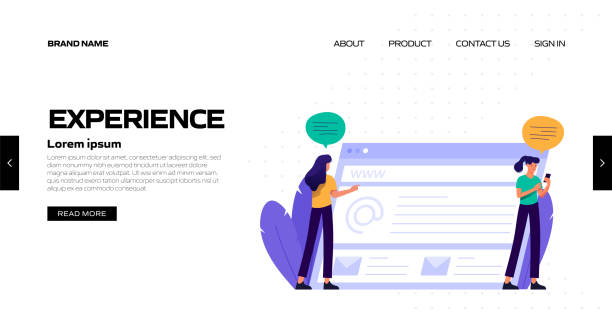
After implementing an SEO-optimized website design, the next crucial step is #measuring_SEO_performance and #data_analysis.
Without precise measurement, you cannot understand which strategies have been effective and which need optimization.
#Data_analysis_tools like Google Search Console and Google Analytics provide invaluable sources of information.
Google Search Console helps you monitor your site’s performance in search results, identify issues like crawl errors, and see which keywords your site is ranking for.
Google Analytics, on the other hand, provides more comprehensive data about user behavior on your site: number of visitors, pages viewed, time spent on the site, bounce rate, and traffic sources.
By combining these two tools, you can get a complete view of your SEO performance.
For example, if you see in Google Search Console that a particular page has a low ranking for an important keyword, you can check in Google Analytics how users interact with that page.
Does it have a high bounce rate? Is the content not engaging enough?
Data analysis allows you to make informed decisions for #continuous_site_optimization.
For example, if you notice that most mobile users from a specific region are encountering problems, you can focus on improving responsiveness for that particular region.
Or, if you see that a specific keyword attracts a lot of traffic but has a low conversion rate, you can review the content of the relevant page to better align it with user intent.
This is an analytical and guiding approach that helps you maximize the #ROI (Return on Investment) from your SEO-optimized website design.
Periodic reports and comparing site performance with competitors are also part of this process.
Using third-party tools like Ahrefs or Semrush to examine competitors’ backlinks or the keywords they rank for can provide new ideas for your SEO strategy.
SEO is an ongoing process, and data analysis ensures that you are moving in the right direction and quickly identify and respond to any changes in search engine algorithms or user behavior.
The Future of SEO-Optimized Website Design and Emerging Trends

#The_future_of_SEO_optimized_website_design is dynamic and constantly changing, and to remain competitive, one must be aware of #emerging_trends.
One of the most significant trends that has emerged in recent years and will gain even more importance in the future is #Voice_Search.
With the proliferation of voice assistants like Google Assistant, Siri, and Alexa, users are increasingly using voice commands for searching.
This impacts how keyword research is done and how content is structured, as voice searches are typically longer, more conversational, and in the form of questions.
Therefore, SEO-optimized website design must produce content that answers direct and natural questions.
#Artificial_Intelligence (AI) and #Machine_Learning are also playing an increasing role in SEO.
Algorithms like Google’s RankBrain, MUM, and LaMDA allow search engines to better understand the intent behind user queries and provide more relevant and comprehensive results.
This means that merely stuffing content with keywords is no longer sufficient; content must truly be valuable, in-depth, and address the complex needs of users.
SEO-optimized website design should focus on producing comprehensive and authoritative content that is also easy for AI to understand.
Immersive User Experience (UX) and Augmented Reality (AR) and Virtual Reality (VR) may also influence SEO in the near future, especially for industries like tourism and real estate.
Websites must be ready to provide rich and interactive experiences.
Additionally, Semantic Web and Structured Data (Schema Markup) will gain increasing importance.
These codes help search engines understand your site’s content with greater precision and display it in rich formats (Rich Snippets) in search results, which helps increase click-through rates.
Attention to user privacy and data security is also a significant future trend.
With increasing public awareness about privacy, websites that are more transparent about data collection and usage and employ stronger security protocols can gain the trust of users and search engines.
Ultimately, SEO-optimized website design is no longer just about optimizing for algorithms, but about optimizing for users, as evaluated by Google’s smarter algorithms.
A informative and analytical approach to these trends will be the key to sustainable success in the digital space.
Frequently Asked Questions
| Question | Answer |
|---|---|
| What is SEO-optimized website design? | SEO-optimized website design means creating a website that is not only attractive and user-friendly but also has its structure and content optimized for search engines (like Google) to achieve a higher ranking in search results. |
| Why is SEO-optimized website design important? | SEO-optimized website design increases your website’s visibility in search engines, attracts more organic (free) traffic, boosts your brand’s credibility and trust, and ultimately leads to increased sales and customers. |
| What are the key factors in SEO-optimized website design? | Key factors include website loading speed, responsiveness (mobile compatibility), proper URL structure, correct use of title and meta description tags, image optimization, high-quality and user-friendly content, and internal and external linking. |
| What is the role of content in website SEO? | Content is king. High-quality, unique, relevant, and up-to-date content that naturally incorporates target keywords plays a crucial role in attracting users and signaling positively to search engines. |
| How does site speed affect SEO? | Site speed is one of Google’s important ranking factors. Slow websites provide a poor user experience and can lead to an increased Bounce Rate, which harms your SEO ranking. |
| What does website responsiveness mean and why is it important for SEO? | Responsiveness means that your website displays correctly on any device (mobile, tablet, laptop). Since most searches are conducted via mobile, Google prioritizes responsive sites. |
| How do we choose suitable keywords for a website? | Choosing suitable keywords is done by researching and analyzing user needs and competitors. Using tools like Google Keyword Planner, Ahrefs, or Semrush can help in finding high-volume and relevant keywords. |
| What is the importance of internal and external linking in SEO? | Internal linking helps improve site navigation, distribute Page Authority, and assist search engine crawling. External links (backlinks) from reputable sites are also a sign of your site’s credibility and expertise to Google. |
| What is the role of User Experience (UX) in SEO? | Good user experience means simplicity of use, visual appeal, and user satisfaction with the site. Good UX encourages users to stay on the site longer and interact more, which are considered positive signals for SEO ranking. |
| What tools are available for website SEO analysis? | There are numerous tools for SEO analysis, including Google Search Console for monitoring site performance in search, Google Analytics for traffic analysis, GTmetrix and PageSpeed Insights for speed assessment, and paid tools like Ahrefs and Semrush for comprehensive SEO and competitor analysis. |
And other services by Rasawob Advertising Agency in the field of advertising
Smart Website Development: A combination of creativity and technology for digital branding through precise audience targeting.
Smart UI/UX: A creative platform to enhance customer behavior analysis with attractive user interface design.
Smart SEO: Revolutionize click-through rates with the help of attractive UI design.
Smart Direct Marketing: A combination of creativity and technology to attract customers through intelligent data analysis.
Smart SEO: A combination of creativity and technology for online growth through Google Ads management.
And over hundreds of other services in the field of internet advertising, advertising consultation, and organizational solutions
Internet Advertising | Advertising Strategy | Advertorials
Resources
Why is SEO-Optimized Website Design Important?The Importance of SEO in Today’s Website DesignWhat is SEO and Why is it Essential for Your Business?Digital Marketing and SEO Trends in 2024
? To boost your business in the digital world and reach the peak of success, Rasawob Afarin Digital Marketing Agency, specializing in e-commerce website design and comprehensive marketing strategies, is with you to experience a powerful and profitable presence.
📍 Tehran, Mirdamad Street, next to Bank Markazi, Southern Kazeroon Alley, Ramin Alley, No. 6



